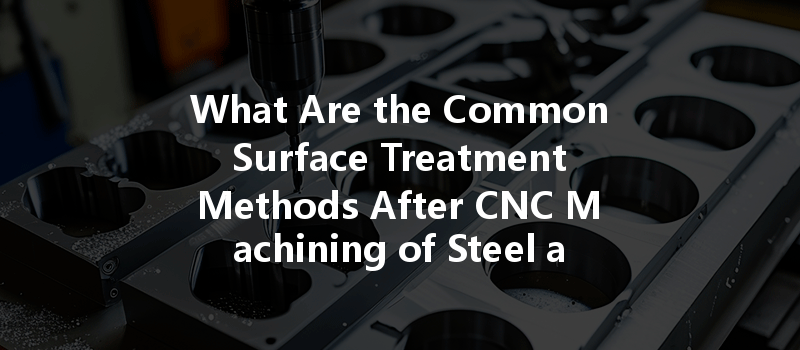Opening
Did you know that up to 80% of the overall performance and lifespan of a mechanical part is influenced by its surface properties? In the world of CNC (Computer Numerical Control) machining, where precision and quality are paramount, the surface treatment of steel parts is a critical stage that can dramatically enhance functionality and durability. From enhancing corrosion resistance to improving wear characteristics, surface treatments are not merely an option; they are a necessity for achieving optimal performance in a variety of applications.
CNC machining is a subtractive manufacturing process that utilizes precision-controlled tools to remove material from a workpiece to create complex shapes and dimensions. Steel is a commonly used material in CNC machining due to its excellent properties, including strength, ductility, and machinability. However, raw steel parts may not always meet the rigors of their intended applications, which is where surface treatments come into play.
Surface treatments fundamentally alter the exterior properties of a steel part, providing enhancements that raw materials lack. These processes can involve chemical, physical, and thermal methods aimed at improving specific surface attributes.
The need for surface treatments in CNC machining cannot be overstated. Below are key reasons why these treatments are essential:
Understanding the various surface treatment methods is essential for selecting the most appropriate one for specific applications. Here, we cover several of the most common methods.
3.1 Anodizing
Anodizing is primarily a process used with aluminum, but it is crucial to mention because it is often related to steel treatments as well. This electrochemical process forms a thick oxide layer on the metal’s surface, greatly enhancing corrosion resistance and wear properties. Anodizing can also provide aesthetic benefits through diverse color options, making it a versatile choice for products that prioritize functionality and appearance.
3.2 Plating

Plating involves depositing a thin layer of one metal onto the surface of another. Common types include:
3.3 Powder Coating
Powder coating involves applying a dry powder to a metal surface, which is then heated to form a cohesive layer. This technique offers superior aesthetic appeal and is highly effective in providing long-lasting protection against corrosion and wear. Powder coating can also create a variety of textures and colors, giving manufacturers the freedom to customize appearances.
3.4 Painting
While traditional, painting serves as a popular surface treatment method due to its versatility, ease of application, and low cost. Different types of paints can provide varying levels of protection against sunlight, moisture, and abrasion. However, paint may not be as durable as some other treatments, making it best suited for non-structural applications.
3.5 Heat Treatment
Heat treatment processes, such as hardening and tempering, are employed to alter the mechanical properties of steel by controlled heating and cooling. This process changes the steel’s microstructure, leading to enhanced hardness, ductility, and overall performance. Heat-treated steel is ideal for high-stress applications.
3.6 Passivation
Passivation is a chemical treatment that helps reduce the reactivity of the material surface. It typically involves immersing parts in a solution that removes free iron or contaminants and creates a protective oxide layer. This method is particularly important for stainless steels, which require enhanced surface integrity to resist corrosion effectively.
Choosing the right surface treatment requires consideration of several critical factors:
Exploring practical case studies can help understand how various surface treatments impact the performance of steel machined parts:
As industries evolve, so do surface treatments:
In conclusion, surface treatments of steel in CNC machining represent a vital stepping stone toward achieving superior performance, aesthetic appeal, and longevity in mechanical applications. Understanding the significance and function of various treatments, such as anodizing, plating, powder coating, and heat treatment, empowers manufacturers to make informed choices tailored to their specific needs.
As industries push for higher quality standards and innovative solutions, surface treatments will play a critical role in shaping the future of manufacturing. Therefore, investing time to understand and implement the right surface treatment can ultimately result in significant long-term benefits for both functionality and cost-efficiency. So, whether you’re aiming to improve corrosion resistance or enhance product aesthetics, remember the powerful impact of effective surface treatments in CNC machining—it’s worth every consideration.






